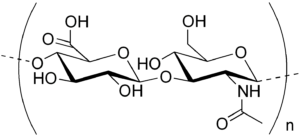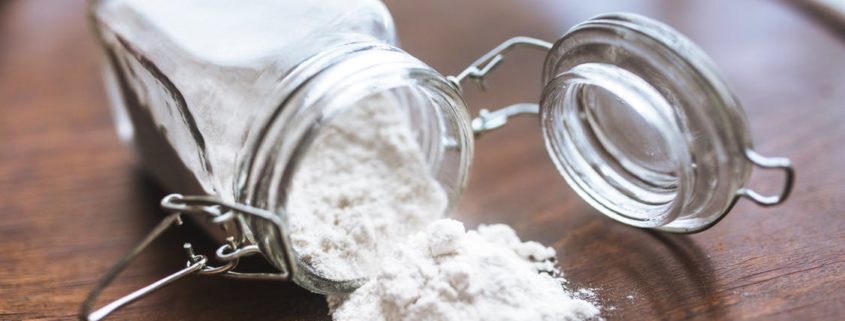Hyaluronic Acid in Cosmetics - How Good Does It Really Help?
What is hyaluronic acid?
Hyaluronic acid is a macromolecule, such molecules consisting of several smaller, repeating, parts that consists of disaccharides. It occurs naturally in the human body, as synovial fluid, and important part of connective tissue, cell proliferation (cell growth), cell migration (cell site change), and metastasis (secretion of negative cells, among others, cancer cells). We mainly use the sodium salt of hyaluronic acid[1].

Fig. 1 A monomer, hyaluronan
What are its properties?
Hyaluronic acid is very resistant to mechanical pressure, which is why it does not simply escape from the joint as a gelling liquid. It changes its viscosity proportionally to the pressure of it on it
acts, with a higher pressure means a lower viscosity. It also "sticks" to the joints and is thus additionally protected against leakage from the joint. Hyaluronic acid has a very high water binding capacity, it can bind up to 6 liters of water per gram of hyaluronic acid. Hyaluronic acid can vary greatly in molecular mass, which makes it possible to produce a wide variety of preparations[2].
What is hyaluronic acid used for?
Hyaluronic acid is used as a moisturizer in cosmetics, is a component of eye drops and is used for joint abrasion as a lubricant [3]. It is also an alternative to silicones and plastics in aesthetic medicine, e.g. Modeling and "splashing" lips, calves, facial contours or buttocks. Such hyaluronic acid modeling will last between 6 months and 3 years, depending on the type of treatment and location [4].
Is hyaluronic acid really such a miracle cure?
In theory, hyaluronic acid is a universally applicable agent, with virtually no disadvantages and actually only benefits. For the cosmetic application, however, it is sold as better than it really is. The reason for this is its molecular size. Because hyaluronic acid is a macromolecule, it has an enormous size, weighing between 6000-9000 (6000-9000 kg / kmol) kilodaltons in animal products. Because of this, the molecules are too large to penetrate the skin, leaving most of the effect only on the outermost skin layers and not entering deeper layers. Frequently, the breakdown products of hyaluronic acid are also used, since they have a much lower mass of 50-130 (50 kg / kmol) kilodaltons, but even here only a few of the fragments penetrate deeply enough into the skin [5]. Thus, cosmetics containing hyaluronic acid are only a fraction as good as they are marketed. However, it is not useless as it still provides the uppermost skin layers with water, forming a thin film that protects the lower layers of the skin [6].
Sources:
Wikipedia[1][5][6]
Article on hyaluronic acid and its medicinal benefits[2][3]
Scientific Article on Hyaluronic Acid in Aesthetic Medicine[4]




Leave a Reply
Want to join the discussion?Feel free to contribute!